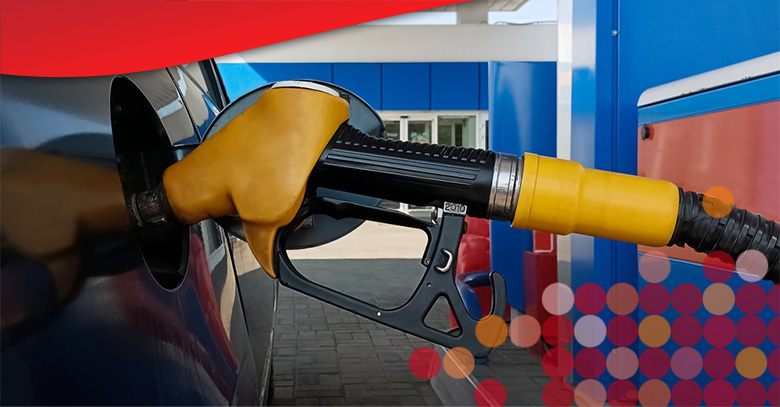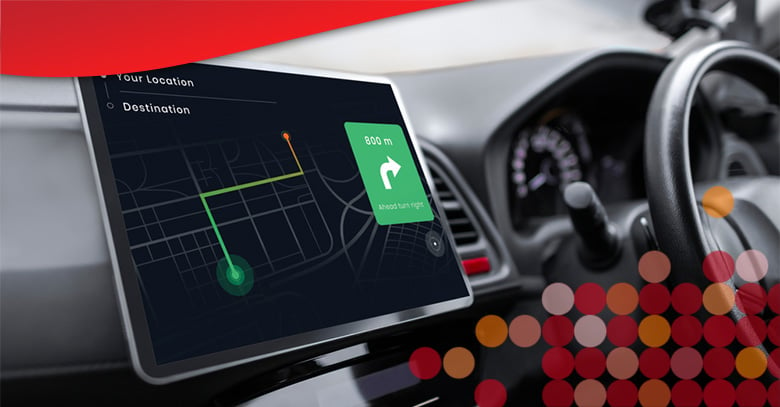The use of fuel-efficient fleet management processes is vital given the rising fuel cost. Fleet enterprises can employ technology, managerial procedures, training, and several other strategies to improve fuel efficiency and cut costs.
We will provide an overview of fuel consumption monitoring in fleet operations at the outset of this article. For fleet managers, we will offer a variety of best practices that can boost your fleet’s efficiency.
Finally, we'll discuss how the Tourmo AI platform can help conserve fuel, eliminate fuel theft, cut costs, and reduce your fleet's carbon footprint.
How Do You Monitor Fleet Fuel Consumption?
There are a few practical approaches to improve your fuel management policies if you're concerned about fuel efficiency and wish to do so. Before starting, taking stock of your current operations and establishing strategic priorities is essential.
Telematics systems and fleet management solutions like Tourmo’s AI-powered platform can assist you in effectively controlling and monitoring fuel consumption, fuel card transactions, and vehicle use throughout the day.
You can significantly improve your company's current fuel-efficiency strategy using Tourmo’s CO2 and fuel solutions. This technology can help fleet managers acquire insightful information about operational patterns and identify areas needing improvement.
The following are some of the main advantages of using Tourmo's AI-driven platform to enhance reporting and fuel efficiency:
- Up to 20% improvement in fuel efficiency
- Eliminate potential fuel theft
- Reduction in manual efforts to reconcile fuel transaction data
- Up to 40% reduction in effort on environmental reporting
- Substantial reduction in fuel cost
How Do I Increase My Fleet Fuel Efficiency?
There are several effective strategies to cut costs and improve your fleet's fuel efficiency. The best strategies may require telematics systems, monitoring software, and fuel fleet cards. These solutions will keep you informed on fleet operations, help you control fuel use, perform preventative maintenance, and more.
However, monitoring driver behavior is one of the best strategies to boost fleet fuel economy. Inefficient driver behavior has a significant impact on fuel costs. For example, aggressive driving and prolonged idling significantly increase fuel consumption.
Tourmo’s Driver Behavior solutions provide comprehensive reporting options, advanced analytics, system-driven driver feedback, and a real-time view of your fleet operations, while issues are spotted automatically, and improvements have the opportunity to take place with minimal supervisory effort.
The Top 10 Best Practices in Fleet Fuel Management
The top ten best practices listed below will enable enterprises to reduce fleet fuel usage and support other mission-critical efficiency goals and requirements:
1. Fleet Sizing and Optimization
Fleet optimization involves properly sizing a company's fleet per operational needs. This strategy involves understanding your operational needs and ideal excess fleet. Also, optimization may require replacing inefficient vehicles with aerodynamic, lighter weight, and more fuel-efficient vehicles that use less fuel per mile.
Carefully choose the optimal fleet inventory amount and type to support its cost-cutting plan during fleet optimization. This process will help you identify opportunities to eliminate unused vehicles, use efficient vehicles, control fuel consumption, and cut mileage.
Fleet optimization will also assist in gaining an improved understanding of fleet operations to better support maintenance plans, promote efficient policies, and reduce operational costs.
2. Cut Back on Vehicle Mileage
By implementing strategies to reduce vehicle mileage and avoid unnecessary travel, a fleet company can significantly reduce fuel consumption. The best strategies will:
- Eliminate unnecessary vehicle trips
- Consolidate trips and routes to eliminate duplication of trips
- Identify, communicate, and reward drivers for following optimal routes
- Include scheduling and routing improvements
- Reduce delivery-related travel distance and time
3. Increase Fleet Fuel Efficiency
Fleet companies can use the following techniques to increase fleet fuel efficiency:
- Closely monitor and manage driving behavior. Encourage drivers to use caution when driving, obey the posted speed limit, lighten the vehicle load when possible, and take routes that consume less fuel.
- Use efficient and eco-friendly vehicles. Use the smallest and most fuel-efficient vehicle to complete each vehicle trip after carefully analyzing its specific requirements.
- Limit prolonged idling. When idle or stationary, drivers should turn off their engines to save fuel.
4. Schedule and Route Improvement
Fleet managers continually work hard to keep fleets running smoothly and efficiently. Fleet managers should optimize scheduling procedures, use optimal routing, and employ the best tracking and management techniques for vehicle utilization.
Tourmo’s Operations Insights solution can assist your fleet enterprise in capturing and utilizing all of the data captured by your existing telematics technology so that you can make better decisions based on accurate and reliable analysis and take action sooner.
5. Preventative Maintenance
Fleet enterprises should perform regular maintenance on their fleet to improve fuel economy. To maintain an optimal preventative maintenance program, you should follow all of the manufacturer’s recommended maintenance including items such as:
- Keep fleet vehicle engines properly serviced
- Keep tires adequately inflated per tire pressure requirements
- Check and replace air filters regularly
6. Provide Driver Training & Coaching
Driver training and coaching can significantly improve your fleet's fuel economy. You should combine monitoring driving behavior with training that reinforces fuel-efficient driving techniques and methods, such as reducing reckless driving events, excessive idling, and more.
The Tourmo AI platform provides automated feedback and system-driven coaching to solve problems as they arise, giving drivers the chance to improve their driving rapidly. Participation among drivers is encouraged via gamification and incentive features.
7. Fleet Fuel Management System
Fleet fuel management systems can be used to track fuel purchases and identify fuel usage patterns. The best ones go further to monitor driver behavior, encourage fuel efficient driving based on specific observed behavior, and identify potential fuel fraud. With these technological solutions, you can quickly address the problems that lead to fuel waste.
Fuel management solutions, like Tourmo's AI-powered platform employs cutting-edge analytics to deliver industry leading fuel efficiency improvements and the most sophisticated fuel fraud detection available using your current telematics equipment and fuel transaction provider.
8. Fuel Cards
Fleet fuel management procedures often include the use of fuel cards. Fuel card systems are a valuable addition to any strategy for managing fuel because of the specific transaction reporting available. You can use a fuel card system to control and monitor spending, understand vehicle level fuel spend, driver level fuel purchases, set spending caps, and ultimately increase fleet fuel efficiency.
Tourmo’s AI-powered platform can reconcile your fuel transactions and uncover suspicious activity — beyond vehicle location matching:
- Fuel card integration
- Fuel transaction reconciliation
- The most advanced fuel theft analysis available
9. Telematics Systems
Your operations will be able to gather fuel data, track vehicle location, calculate mileage, and more with the help of modern telematics systems. These solutions use integrated GPS technology and range in cost and complexity.
Telematics solutions collect large amounts of vehicle data. However, acting on this data can benefit from an advanced AI-powered solution, like Tourmo, to unify and correlate data from multiple systems, identify trends in big data, and either take necessary action with the help of automation or facilitate action through automated workflows.
10. Keep Vehicles Clean
And if you’ve done everything else, keep in mind that large vehicles, heavy-duty trucks, and haulers can acquire excess weight due to buildup from dirt, oil, salt, and other materials. In addition to potential fuel benefits, it doesn’t hurt to wash your vehicles regularly to showcase your brand.
Tourmo AI — Fleet Fuel Management Solutions
Tourmo's fleet fuel management solutions can help drive improvement in your company’s existing fuel management strategy. Tourmo AI-powered analytics combined with automation workflows can immediately lower fuel consumption and the environmental impact of your fleet.
With Tourmo AI, you can spot potential fuel theft and automatically reconcile data on all fuel card transactions. Drivers can learn how to save fuel with automated feedback, while the system's gamification and incentive system encourages and rewards participation.
Author:
Matt Braun leads the Solutions Consulting team at Tourmo. He helps Tourmo customers better understand their challenges and uncover creative, efficient solutions to improve their operations. He guides them through the benefits provided by mobility workflow automation, AI-powered tools and reports, and the value of data science. Matt’s focus on clear, actionable, and effective information is foundational to all prescribed solutions. Matt came to Tourmo after 15 years as Sr. Director of Performance Improvement at First Student –– an organization operating a fleet of more than 40,000 vehicles. He holds a Bachelor of Business Administrations from the University of Cincinnati and a Masters of Business Administration from Thomas More College. Matt and his wife live in the Cincinnati area where Matt coaches most of the sports of their 2 sons and daughter.


 Matt Braun
Matt Braun


.jpg)
